Mastering the Art of Weed Control: Effective Strategies for Your Yard
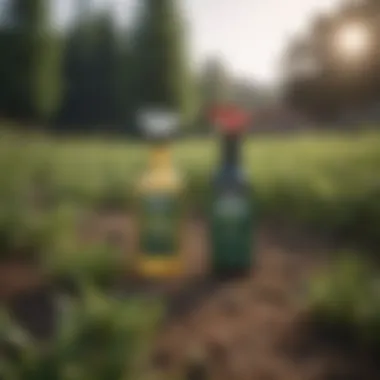

Overview of the Topic
To effectively combat weeds in your yard, it is crucial to understand the various strategies and techniques available. Weeds can quickly invade your yard, disrupting the natural balance and health of your landscape. This section will provide a comprehensive overview of the topic, highlighting the key points that will be discussed and the relevance of implementing effective weed control methods.
Current State and Challenges
The current state of weed infestation in yards poses significant challenges to maintaining a visually appealing and healthy outdoor space. Weeds compete with desirable plants for essential nutrients, water, and sunlight, often outcompeting them and leading to a decline in the overall aesthetic and ecological value of the yard. Identifying and addressing these challenges is essential to restoring and preserving the beauty and functionality of the landscape.
Sustainable Solutions
Exploring sustainable solutions is paramount in combating weed proliferation while preserving the ecological balance of the yard. Natural remedies such as mulching, hand weeding, and the use of eco-friendly herbicides offer effective and environmentally conscious ways to control weeds without harming beneficial organisms. Successful case studies and examples will be showcased to demonstrate the efficacy of these sustainable practices in achieving long-term weed management.
Impact and Importance
The impact of weeds on ecosystems, communities, and future generations cannot be understated. Weeds not only disrupt the natural habitat and biodiversity but also have economic implications, affecting agriculture and local flora and fauna. Understanding the importance of conservation efforts and sustainable resource use is critical in mitigating the negative effects of weeds on the environment and ensuring a greener, healthier future for all.
Understanding Weed Growth
Understanding weed growth plays a pivotal role in ensuring the health and aesthetics of your yard. By comprehending the intricacies of weed behavior, homeowners can implement targeted strategies for effective weed management. From identifying different weed types to understanding their life cycles, knowledge of weed growth is fundamental in devising a successful weed control regimen. This section delves deep into the nuances of weed growth, shedding light on the various aspects crucial for maintaining a weed-free landscape.
Types of Weeds
Annual Weeds
Annual weeds are characterized by their short life cycle, completing their growth cycle within a year. Their rapid growth and propagation make them a common nuisance in yards and gardens. While annual weeds are relatively easy to control compared to perennial counterparts, their prolific seeding nature poses a continuous challenge for homeowners. Nevertheless, understanding the distinctive features of annual weeds equips individuals with the necessary information to combat these plants effectively.
Perennial Weeds
Perennial weeds, on the other hand, persist year after year, establishing deep root systems that make eradication particularly challenging. Their ability to regrow from roots or seeds makes them persistent invaders in landscapes. Although controlling perennial weeds demands sustained effort, recognizing their resilience is crucial in developing long-term weed management strategies.
Biennial Weeds
Biennial weeds follow a two-year life cycle, germinating in the first year and flowering in the second. This distinct growth pattern sets biennial weeds apart from their counterparts and influences control measures. Identifying biennial weeds at different stages of their life cycle is essential for effective eradication and preventing reseeding, safeguarding the yard from future infestations.
Factors Contributing to Weed Growth
Soil Quality
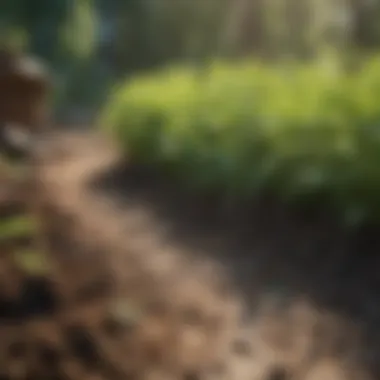

The quality of soil in your yard significantly impacts weed growth. Nutrient-rich soil provides an ideal environment for weeds to thrive, outcompeting desirable plants. Understanding soil composition and fertility levels enables homeowners to implement soil amendments that discourage weed growth while promoting healthy vegetation.
Sunlight Exposure
Sunlight exposure plays a crucial role in weed development, as most weed species require adequate light to photosynthesize and grow. Shaded areas in the yard create favorable conditions for weed proliferation, necessitating targeted interventions to mitigate excessive sunlight deprivation. Managing sunlight exposure through strategic landscaping practices can help suppress weed infestations effectively.
Watering Practices
Proper watering practices are essential for maintaining a healthy yard while inhibiting weed growth. Overwatering can promote weed seed germination, leading to dense weed populations. By adopting controlled watering routines and techniques such as drip irrigation, homeowners can minimize weed-friendly moisture levels in the soil, fostering a weed-resistant landscape.
Natural Weed Control Methods
In this section, we will delve into the crucial topic of natural weed control methods, emphasizing sustainable practices for maintaining a weed-free yard. Natural weed control methods offer an environmentally friendly alternative to chemical solutions, promoting ecosystem health and biodiversity. By exploring the utilization of organic herbicides and mulching techniques, we aim to provide insightful strategies for combating weeds effectively while minimizing ecological impact. This section serves as a cornerstone in our comprehensive guide to combating weeds in your yard.
Organic Herbicides
Vinegar Solution
Organic herbicides such as Vinegar Solution play a pivotal role in weed management due to their non-toxic nature and effectiveness in targeting weeds. Vinegar Solution, primarily composed of acetic acid, serves as a natural weed killer that disrupts weed growth without harming the environment. Its rapid degradation process ensures minimal residual impact on surrounding flora and fauna, making it a sustainable choice for weed control. While Vinegar Solution offers a potent weed-killing solution, its acidic properties may pose challenges for select plant species and require careful application.
Boiling Water
Boiling Water presents another natural weed control method known for its simplicity and accessibility. By pouring boiling water directly onto weeds, the intense heat destroys plant cells, leading to wilt and eventual demise. This method is particularly effective for targeting weeds in pathways, driveways, and sidewalk cracks. Boiling Water provides a cost-effective and chemical-free approach to weed eradication, making it an attractive option for individuals seeking a quick and eco-friendly solution. However, caution must be exercised during application to prevent potential burns or scalds.
Salt Spray
Salt Spray features as a natural herbicidal option that leverages the desiccating properties of salt to dehydrate and eliminate weeds. The application of Salt Spray disrupts weed physiology by causing water imbalance within plant cells, leading to dehydration and death. While Salt Spray offers a cost-effective and readily available weed control solution, its prolonged use may contribute to soil salinity issues, impacting plant growth in the long term. Additionally, careful application is necessary to avoid affecting desirable vegetation surrounding the treated areas.
Mulching Techniques
Mulching techniques play a critical role in weed suppression by creating a barrier that impedes weed growth, retains soil moisture, and regulates temperature. Organic mulches, derived from natural materials such as bark, straw, or leaves, provide a biodegradable weed control method that enriches soil health. Their ability to decompose over time enhances soil structure and fertility, fostering a conducive environment for plant growth. Plastic mulches, on the other hand, offer a synthetic weed barrier that restricts weed emergence by blocking sunlight and hindering photosynthesis. While plastic mulches are durable and effective in weed prevention, their non-biodegradable nature raises environmental concerns regarding waste management and recyclability. Lastly, newspaper mulching utilizes layers of newspaper to suppress weed growth while promoting moisture retention and soil temperature regulation. This cost-effective and eco-friendly mulching option repurposes waste paper materials, offering a sustainable approach to weed control.
This detailed exploration of organic herbicides and mulching techniques underscores the significance of natural weed control methods in fostering a harmonious balance between weed management and environmental conservation. By incorporating these strategies into your yard maintenance routine, you can effectively combat weeds while nurturing a thriving and sustainable landscape.
Mechanical Weed Removal
Mechanical weed removal is an essential aspect of maintaining a weed-free yard. By utilizing manual methods to eradicate unwanted weeds, you ensure a more sustainable approach to gardening. This section will delve deep into the significance of mechanical weed removal, highlighting the benefits it offers and the specific considerations that must be kept in mind.
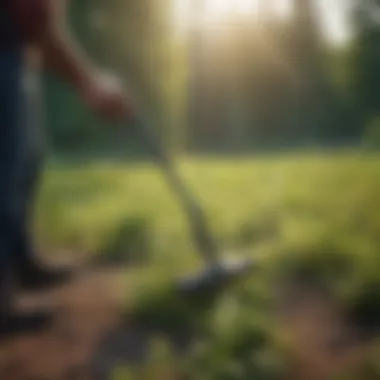
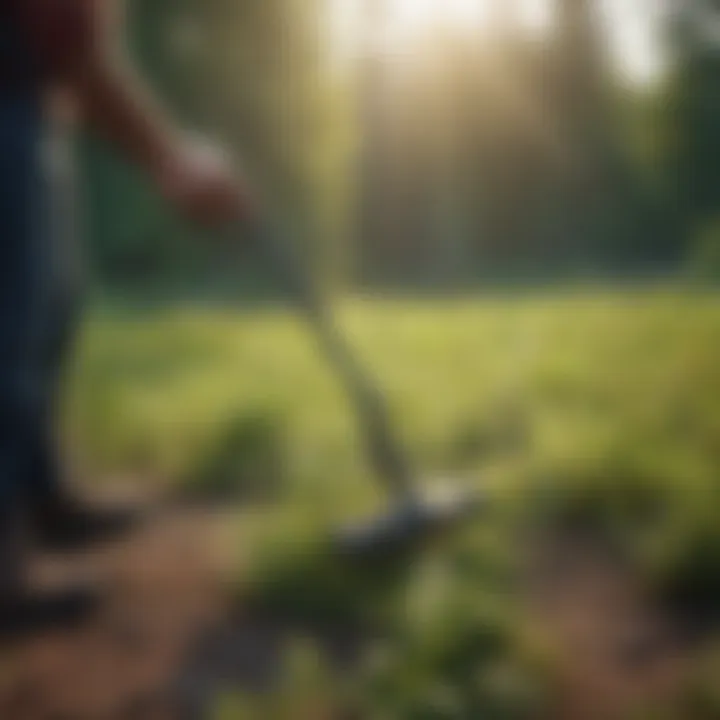
Hand Pulling
Hand pulling is a labor-intensive yet highly effective method of weed removal. When done correctly, hand pulling can root out weeds from the ground, preventing regrowth and spreading. The proper technique for hand pulling involves grasping the weed at its base and gently pulling it out along with its roots. This method is popular for its precision and environmentally friendly nature, as it eliminates the need for harsh chemicals that can harm beneficial plants and organisms.
Proper Technique
The proper technique for hand pulling weeds lies in ensuring you grasp the weed as close to the soil as possible to extract the entire root system. This meticulous approach guarantees that the weed does not regenerate, promoting long-term weed control in your yard. Additionally, hand pulling allows you to target specific weeds without impacting surrounding vegetation, making it a preferred choice for eco-conscious gardeners.
Tools for Effective Removal
Though hand pulling primarily relies on manual labor, using specialized tools such as weed removal tools, trowels, or weeding knives can facilitate the process. These tools aid in reaching deep-rooted weeds or those with tough stems, enhancing the efficiency of weed removal. However, it's essential to choose tools that are suitable for the specific weeds in your yard to avoid accidental damage to desirable plants.
Precautions to Take
While hand pulling is a safe method, certain precautions should be taken to prevent any negative repercussions. Wearing gardening gloves is advisable to shield your hands from potential thorns or irritants present on the weeds. Additionally, ensuring the soil is adequately moist before hand pulling can aid in smooth extraction of weeds along with their roots, reducing the chance of breakage that can lead to regrowth.
Use of Weed Pullers
Weed pullers are specialized tools designed to ease the process of weed removal, especially for individuals with large yards or mobility limitations. This section will explore the different types of weed pullers, instructions on their correct usage, and the benefits they bring to weed control initiatives.
Types of Weed Pullers
There are various types of weed pullers available, from long-handled stand-up pullers to hand-held claw extractors. Each type caters to specific needs, such as targeting weeds in different soil conditions or accessing hard-to-reach areas. The diversity in weed puller types ensures that there is a tool suitable for every gardener, regardless of their yard size or physical abilities.
How to Use Them Correctly
Using weed pullers effectively entails positioning the tool around the weed's base, pressing it firmly into the ground, and then levering it out along with the weed. This straightforward process minimizes strain on your back and arms while efficiently uprooting the weed. Understanding the proper technique for each type of weed puller maximizes its effectiveness and minimizes the risk of damaging surrounding plants.
Benefits of Weed Pullers
The benefits of weed pullers extend beyond convenience, offering a sustainable solution to persistent weed problems. By using weed pullers, you reduce the need for chemical herbicides, promoting a healthier ecosystem in your yard. Moreover, weed pullers target weeds at their root, preventing regrowth and supporting long-term weed management. Investing in quality weed pullers equips you with a valuable tool for maintaining a pristine landscape without relying on harmful chemicals.
Chemical Weed Control
In the realm of weed management, Chemical Weed Control plays a crucial role in combating invasive plant species. By utilizing herbicides, one can target weeds effectively and minimize their impact on the overall landscape. Chemical Weed Control offers a practical solution for controlling weeds that may be challenging to remove manually or through natural means. However, it is essential to approach this method with caution, considering factors such as environmental impact, application precision, and long-term effectiveness. Properly selecting and applying chemical herbicides can significantly contribute to weed eradication efforts while maintaining environmental stewardship.
Selective vs. Non-Selective Herbicides
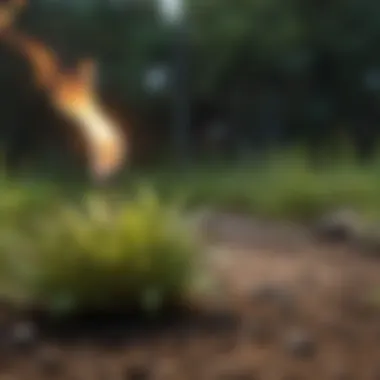

Advantages and Disadvantages
When discussing the use of herbicides, the distinction between Selective and Non-Selective Herbicides is of paramount importance. Selective herbicides target specific types of weeds, preserving desired plants in the vicinity. This targeted approach minimizes collateral damage to other vegetation, proving especially beneficial in agricultural and landscaping settings. On the other hand, Non-Selective herbicides are designed to eliminate a broad spectrum of plant species, making them more suitable for clearing large areas quickly. Their versatility comes with the disadvantage of potential harm to non-target plants, necessitating careful application to avoid unintended consequences. Understanding the advantages and disadvantages of Selective and Non-Selective Herbicides is crucial for implementing effective weed control strategies tailored to the specific needs of the landscape.
Proper Application Techniques
Efficient application of herbicides is key to maximizing their effectiveness while minimizing adverse effects on the environment. Properly following application techniques ensures targeted weed control and minimizes environmental contamination risks. Factors such as application timing, spray equipment calibration, and adherence to safety guidelines significantly impact the success of herbicidal treatments. Adopting best practices in herbicide application, such as avoiding drift, using protective equipment, and adhering to dosage instructions, enhances the efficacy of chemical weed control measures. By mastering proper application techniques, one can achieve precise and environmentally responsible weed management outcomes, safeguarding both plant health and ecosystem integrity.
Pre-Emergent Herbicides
Application Timing
When incorporating Pre-Emergent Herbicides in weed management programs, timing is crucial to achieving optimal results. These herbicides are applied before weed seeds germinate, creating a barrier that inhibits their growth. Timely application, typically in the early spring or fall, targets weed seeds at their most vulnerable stage, preventing their emergence and establishment. The strategic timing of Pre-Emergent Herbicide application aligns with the natural life cycle of weeds, disrupting their growth patterns and reducing the need for post-emergent treatments. By understanding the ideal application timing for Pre-Emergent Herbicides, one can effectively prevent weed infestations and maintain a weed-free landscape.
Effectiveness on Weed Seeds
The effectiveness of Pre-Emergent Herbicides on weed seeds lies in their ability to hinder germination and seedling development. By forming a barrier in the soil, these herbicides create a hostile environment for weed seeds, impeding their growth and proliferation. Their prolonged residual activity ensures long-lasting protection against weed infestations, offering a proactive approach to weed control. The effectiveness of Pre-Emergent Herbicides on weed seeds not only suppresses current weed populations but also prevents future infestations, promoting sustainable weed management practices. Incorporating these herbicides into weed control strategies proves advantageous in maintaining a healthy landscape and minimizing the need for continuous intervention.
Preventive Measures
Preventive measures to combat weeds in your yard are crucial in maintaining a lush and healthy outdoor space. By implementing proper preventive steps, you can significantly reduce the presence of weeds and promote the growth of desired plants. These measures serve as proactive strategies to tackle potential weed growth before it becomes a major concern, saving you time and effort in the long run. Additionally, preventive measures contribute to the overall aesthetics of your yard, creating a visually appealing landscape that enhances the curb appeal of your property.
Healthy Lawn Practices
Proper Mowing Heights
Proper mowing heights play a significant role in promoting a healthy lawn and preventing weed infestations. Maintaining the correct grass height helps in shading the soil, reducing moisture evaporation, and inhibiting weed seed germination. By adhering to the recommended mowing heights for different grass types, you can foster stronger turf density, resulting in a competitive advantage over weeds. Moreover, maintaining proper mowing heights promotes deeper root growth, enhancing the lawn's resilience to environmental stressors. While there are benefits to proper mowing heights, it's essential to avoid cutting the grass too short, as this can weaken the turf and create opportunities for weeds to establish themselves.
Adequate Watering
Adequate watering is essential for sustaining healthy grass growth and minimizing weed encroachment. Proper hydration supports the development of robust root systems, improving the lawn's ability to outcompete weeds for resources. By watering deeply and infrequently, you encourage deep root growth, making the grass more drought-resistant and resilient. Overwatering should be avoided, as it can lead to shallow root systems and create favorable conditions for weed proliferation. Consistent watering practices help in maintaining optimal soil moisture levels, creating an environment that is unfavorable for weed establishment.
Overseeding
Overseeding involves sowing grass seed over an existing lawn to fill in sparse areas and promote denser turf growth. By overseeding regularly, you can enhance the competitiveness of the grass against weeds, as denser grass cover inhibits weed seed germination and limits weed growth. Overseeding also helps in rejuvenating tired or worn-out lawns, leading to improved aesthetics and functionality. Additionally, introducing new grass varieties through overseeding can enhance the lawn's overall resilience to pests, diseases, and environmental stressors. While overseeding offers numerous benefits, proper timing and seed selection are crucial factors to consider for successful establishment and integration into the existing grass.
Regular Inspections
Spotting Early Weed Growth
Early detection of weed growth is critical in preventing widespread infestations and minimizing the need for intensive weed control measures. Regular inspections allow you to identify emerging weeds at their initial stages, enabling prompt and targeted intervention. By identifying weeds early, you can take proactive measures to remove them before they compete with desirable plants for resources. Spotting early weed growth also helps in preventing seed production and dispersal, reducing the weed seed bank in your lawn over time. Implementing a systematic inspection routine enables you to stay ahead of weed populations and maintain a healthy turf.
Taking Immediate Action
Upon spotting early weed growth, taking immediate action is paramount to prevent further spread and establishment. Promptly addressing weeds through manual removal, spot treatments, or targeted herbicide application can prevent them from maturing and producing seeds. By acting swiftly, you disrupt the weed's lifecycle and reduce its impact on the surrounding vegetation. Immediate action also limits the competition between weeds and desired plants, promoting a more balanced and weed-free lawn environment. Timely intervention is key to controlling weed populations effectively and preserving the overall health and appearance of your yard.



